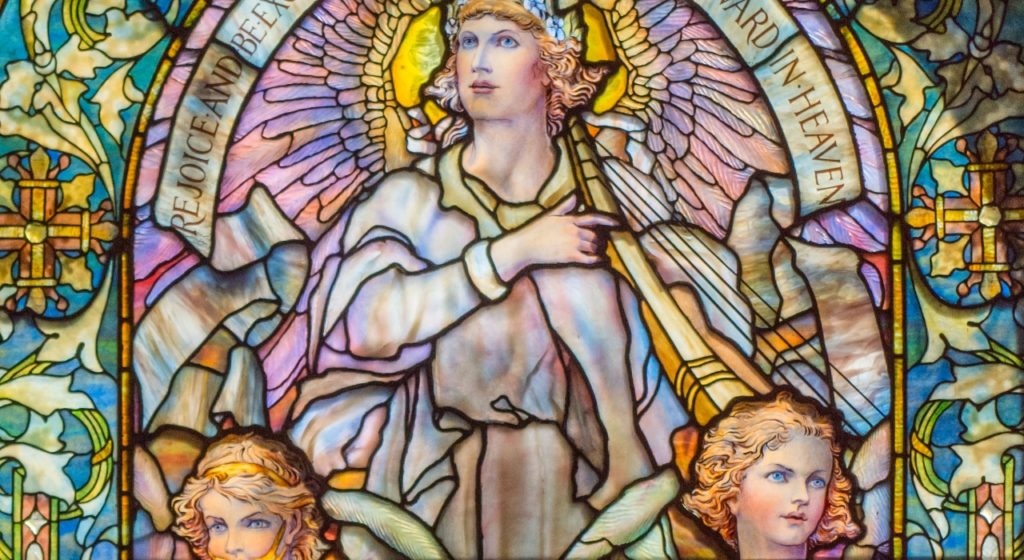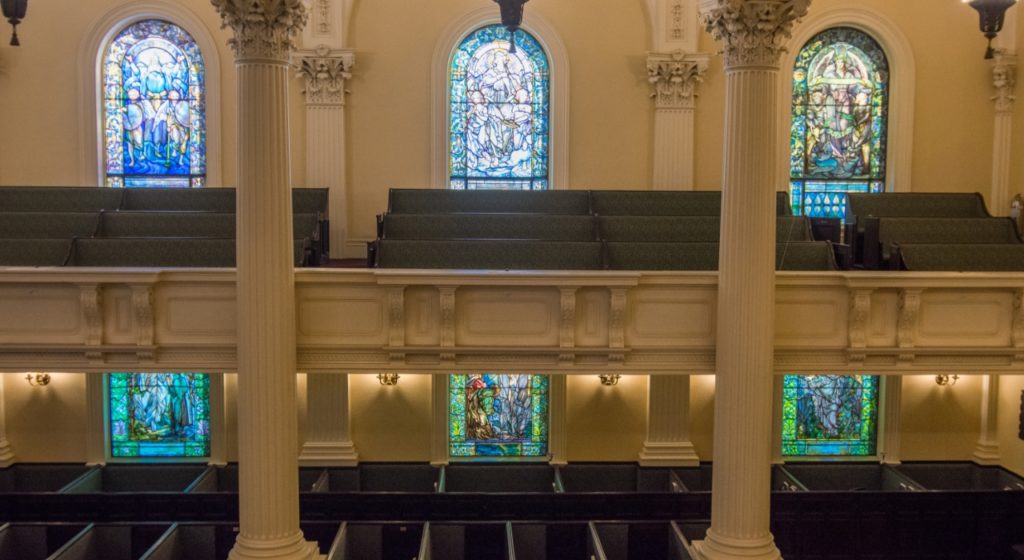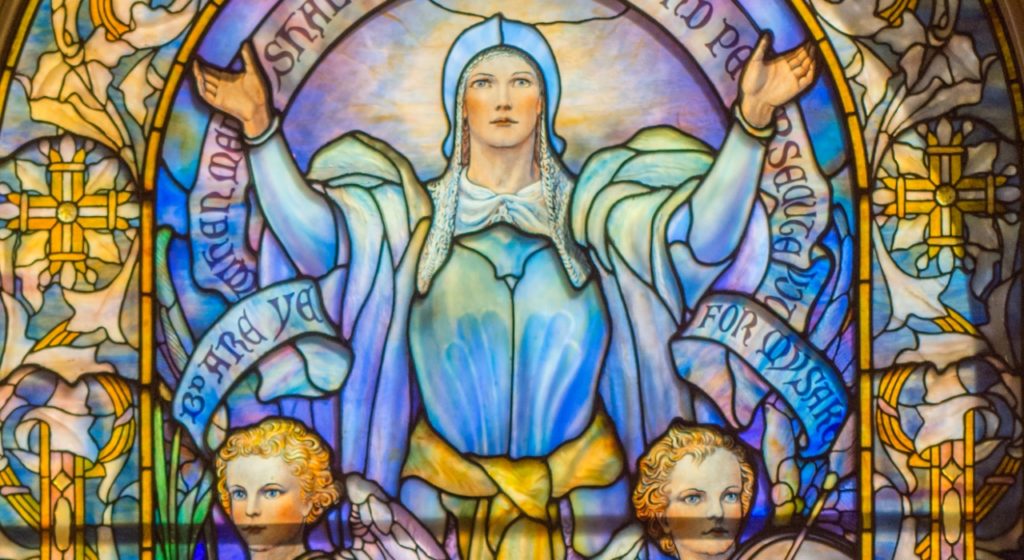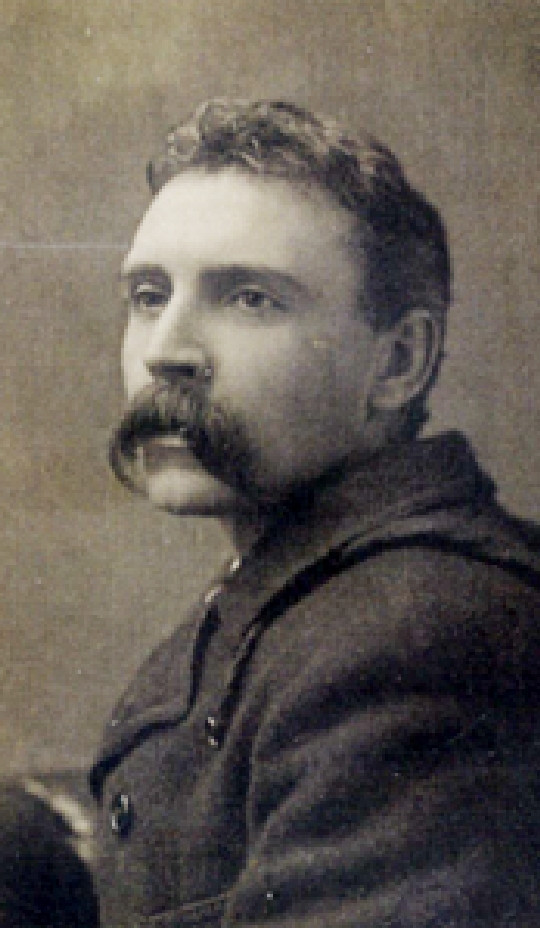Arlington Street Church’s resplendent windows are the legacy of one of Tiffany Studios’ longest enduring partnerships. Between 1898 and 1933, the church commissioned Tiffany to create a series of sixteen stained glass windows. Designing the collection in unison allowed Tiffany to produce an unrivaled series with a consistent narrative and a united theme. These magnificent works of public art represent the largest collection of single-themed Tiffany windows in the world.
Window Designers
Louis Comfort Tiffany
Louis Comfort Tiffany (1848-1933) was the son of the prominent jeweler, Charles Lewis Tiffany, who founded Tiffany & Company. Louis Tiffany began his career as a painter but transitioned to interior design in the 1870s. By the early 1880s, his residential decorating firm was a great success with an illustrious client list including Samuel Clemens (Mark Twain), Hamilton Fish, and Cornelius Vanderbilt.
Tiffany began experimenting with stained glass in his New York apartment in 1878. In this early work, he began to develop his trademark techniques using rough-cut jewels and creating opalescent and confetti glass. In 1885, he dissolved his design firm to establish the Tiffany Glass Company.
Tiffany capitalized on the church building frenzy at the end of the 19th century by creating ecclesiastical windows for the new buildings as well as serving as the designer for their interiors. At the height of the demand for his institutional and residential work, Tiffany’s studios contained more than 5,000 unique patterns for window designs.


Frederick Wilson
Arlington Street Church’s windows are the work of Tiffany’s top designer, Frederick Wilson (1858 – 1932). Wilson began his career as a painter with an artistic curiosity that included anatomical studies, Renaissance art, medieval ornamentation, and the contemporary British Pre-Raphaelite movement.
Drawn by the American demand for stained glass, Wilson emigrated from his native England in 1892. Within a year, he was employed by Tiffany and become the chief designer for ecclesiastical windows in 1899.
An incredible draftsman who was keenly observant of the natural world, Wilson frequently explored the human form in motion. He assiduously sketched the feathers of herons and cranes as studies for his angel wings. Arlington Street Church’s windows feature many of Wilson’s signature achievements including his complex groupings of figures and his celebrated depictions of angels.
Unique Features of Tiffany Windows
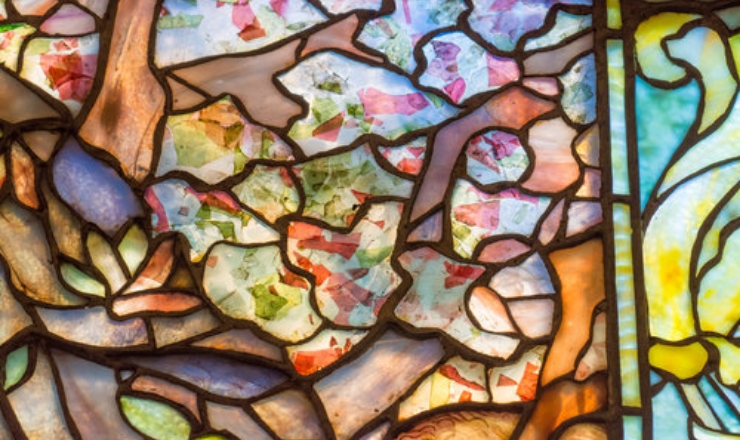
Confetti Glass
When he became interested in glass, Tiffany traveled to Europe to study the great medieval stained glass artists. In the glass blowing studios of Venice, he became enchanted with “confetti glass,” which is created by covering tissue-thin shards of colored glass with a sheet of molten glass. Confetti glass is used in several of the Arlington Street Church windows to create the impression of tightly packed blossoms in the trees.
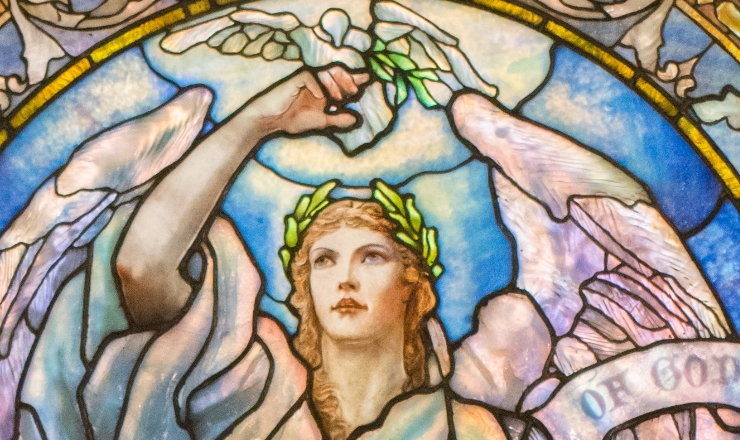
Favrile Glass
In Europe, Tiffany was fascinated by the glass produced by the ancient Romans and its iridescent sheen. It is unclear whether the opalescence was part of the design or the result of thousands of years underground, but Tiffany was determined to recreate it with his chemists and glass blowers. Tiffany patented the process of mixing colors while hot and coined the term “Favrile glass” to describe the shimmer effect in his luminous windows.
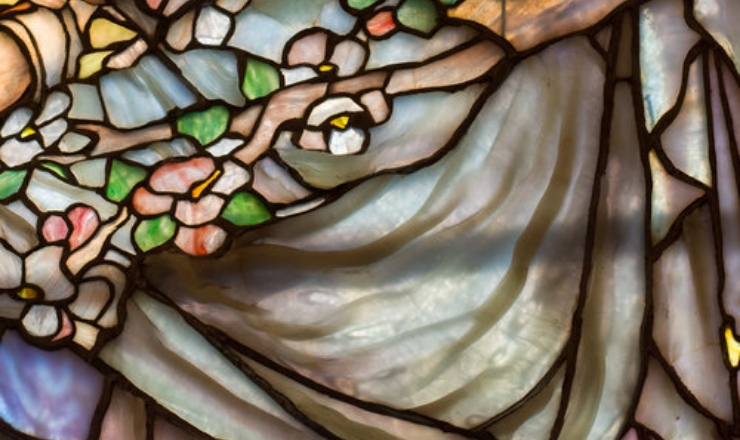
Drapery Glass
To create the effect of three-dimensional flowing robes or rippling angel wings, highly skilled Tiffany designers manipulated folds into the molten glass as it came through the rollers. This technique was a unique innovation that allowed Tiffany designers to add detail without darkening the windows by applying black paint to the glass.
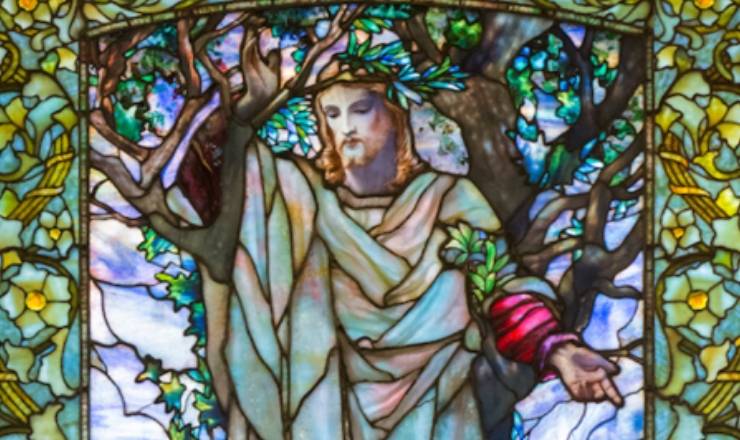
Soft Colors
In contrast to the vivid reds, blues, and yellows of the windows in the great cathedrals of Europe, Tiffany used softer shades and reserved primary colors for striking accents. This palette of pastels allowed Tiffany to create his stunning “painting in glass” effect.
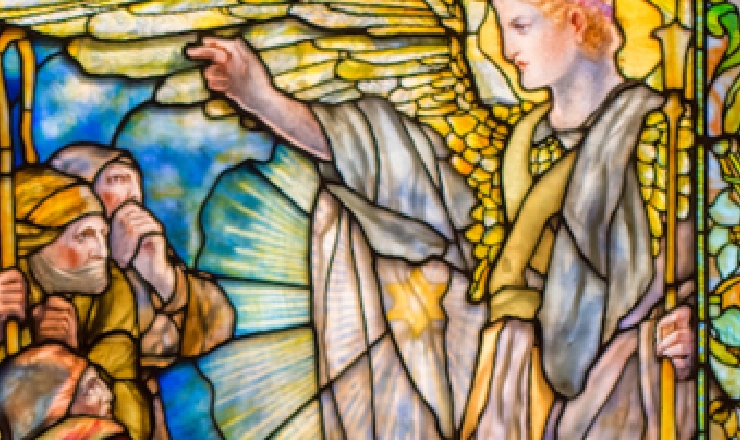
Layers
The depth of color in Tiffany windows results from layering as many as six or seven sheets of glass. To achieve the mother-of-pearl effect, Tiffany designers placed a base of white milk glass behind several layers of marbleized sheets of various colors.
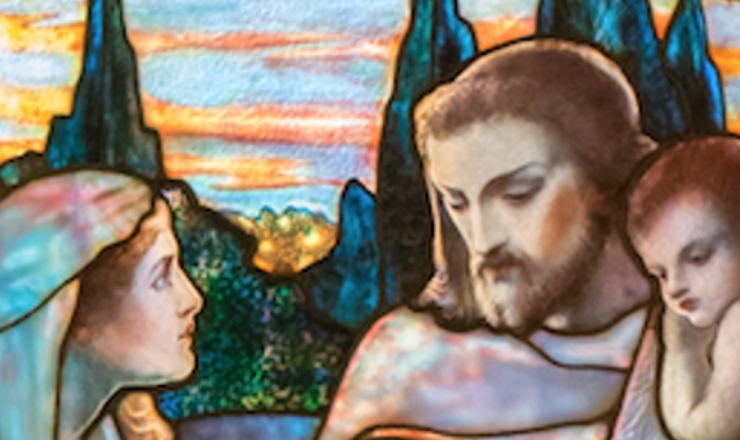
Face, Hands, and Feet
The faces, hands, and feet of the graceful and elegant figures depicted in Tiffany’s windows were expertly painted onto glass panels then fired to produce a virtually indestructible, translucent, enamel-like surface.

